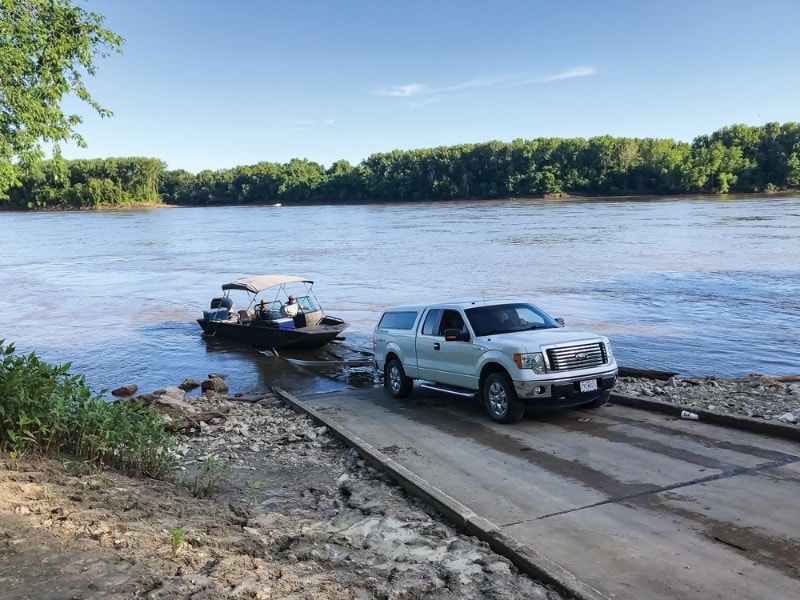Running the Bank Lines

The Missouri River is the longest stretch of water in North America, running out of the Rocky Mountains in northwest Montana to St. Louis, Missouri, where it joins the Mississippi river and heads south to New Orleans. Lewis and Clark explored this river in their famous “Corps of Discovery Expedition” from 1804-1806. Today, the Corps of Engineering maintains mile markers, starting at #1 near St. Louis and extending to #2320 just north of Three Forks, Montana. My closest access to the river, here in Missouri, is at mile marker 180 at Katfish Katy’s in Huntsdale.
In our stretch of the river, there are lots of catfish – blues, flatheads and channel cat. The Missouri State record on blue cat is 117 pounds, on flatheads it’s 100 pounds, and 34 pounds on channel cat. With fish that big, it’s no wonder that fishing for catfish on the Missouri River is one of the favorite pastimes of many local fishermen. The typical method of fishing for catfish in the river is big hooks and heavy line, tied to poles stuck in the bank – or tied to tree branches or even rocks.
A group of friends had set out lines on Friday

after lunch and invited me to “go along” on Saturday afternoon (the second running of the lines), to see what had been caught. They were using live fish for bait, but chicken livers or a myriad of other natural baits also attract catfish. Sometimes it was one hook to a short line, or multiple hooks to a longer line (throw line or trotline). State law limits the number of hooks per person to 33 and requires each line to be labeled with the owner’s ID.
The water level was about 19 feet at the Boonville gage that afternoon; the dykes don’t show up until about 12 feet, but George had sonar on his boat, so it was like driving a highway – except, the occasional floating limb or tree – to watch out for.
The lines were placed in every interesting place, on both sides of the river, for many miles. We eased up the river, removing caught fish and rebaiting the hooks. Then, it was full throttle down the middle of the river for 30 minutes, back to the ramp – with our haul of six “keeper” catfish. All in all, a very interesting afternoon on the Missouri River.

